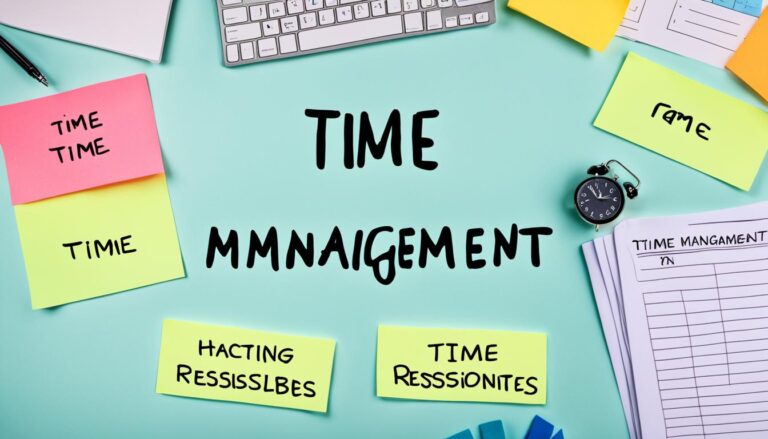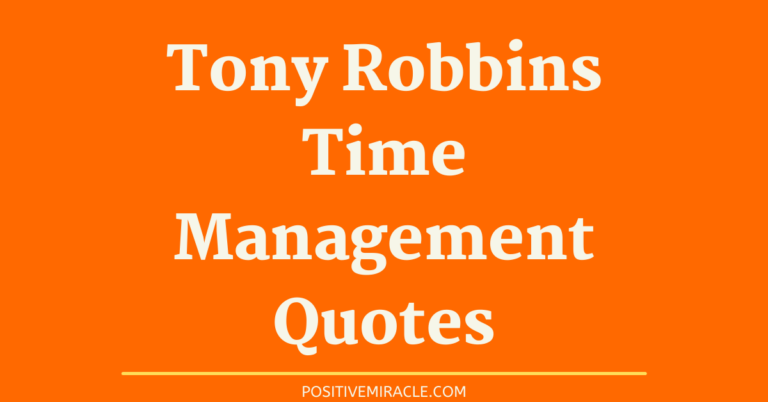Master Executive Time Management for Success

Are you struggling to keep up with the demands of your executive role? Do you often find yourself overwhelmed by multiple responsibilities and tight deadlines? The key to achieving success lies in mastering your time management skills. In this article, we will explore effective strategies and tools specifically designed for busy executives like you. Discover how you can streamline your activities, optimize productivity, and unlock your full executive potential.
Key Takeaways:
- Implementing effective time management strategies is crucial for busy executives.
- Prioritizing tasks and utilizing productivity tools can optimize your time.
- Delegation and outsourcing can free up your schedule and foster professional growth.
- Time blocking and time chunking techniques help improve focus and productivity.
- Effective communication is essential for efficient time management.
Understanding the Importance of Time Management for Executives
As an executive, you face unique challenges in managing your time. With a multitude of responsibilities on your plate, efficient time management is not just advantageous for you; it is a fundamental necessity. The ability to effectively manage your time empowers you to prioritize tasks, allocate resources efficiently, and maintain a healthy work-life balance.
Without apt time management skills, you may easily become overwhelmed and experience a decrease in productivity. Recognizing the value of your time and utilizing it wisely is crucial for driving success in your role as a leader.
By mastering executive time management, you can maximize efficiency, optimize productivity, and ultimately achieve your goals. Let’s delve deeper into why time management is so crucial for executives like yourself.
The Challenges Faced by Executives
Executives like you operate in a fast-paced and demanding environment. You constantly juggle multiple tasks, meetings, and projects, often under strict deadlines. Time management skills for leaders are essential to navigate these challenges effectively.
Without proper time management, you risk falling behind on critical tasks, making rushed decisions, or compromising the quality of your work. Moreover, inadequate time management can have a significant impact on your work-life balance, leading to increased stress and diminished personal well-being.
When you prioritize effective time management, you empower yourself to take charge of your schedule, stay organized, and tackle important tasks efficiently. This not only enhances your productivity but also allows you to maintain a healthy work-life integration.
The Benefits of Effective Time Management
When you master time management skills, you unlock a multitude of benefits that directly contribute to your success as an executive. These benefits include:
- Improved Productivity: With proper time management, you can optimize your workflow, minimize distractions, and accomplish more in less time.
- Enhanced Focus: By allocating dedicated time slots for specific tasks, you can improve your concentration and attention to detail.
- Reduced Stress: Time management allows you to approach your responsibilities in a structured manner, reducing stress and anxiety associated with overwhelming workloads.
- Effective Decision Making: When you have a clear overview of your priorities, you can make informed decisions and allocate resources effectively.
- Stronger Leadership: By managing your time effectively, you set an example for your team, fostering a culture of productivity and empowering others to optimize their own time management.
As you can see, mastering executive time management is not just a matter of efficiency; it directly impacts your overall performance and the success of your organization.
Take Control of Your Time for Success
To maximize efficiency and achieve your goals as an executive, investing in time management skills is essential. By recognizing the value of your time and implementing effective strategies, you can stay ahead, accomplish more, and maintain a healthy work-life balance.
In the next section, we will delve into specific time management strategies tailored to the needs of executives. From task prioritization to leveraging productivity tools, we will equip you with the necessary skills to optimize your time management and unlock your full potential.
Task Prioritization and Classification Strategies for Executives
As an executive, it is essential for you to develop the ability to prioritize tasks effectively in order to optimize your time management. By distinguishing between tasks based on their urgency and importance, you can ensure that you focus your efforts on what truly matters. Here are two powerful strategies that can significantly improve your task prioritization:
The Eisenhower Matrix
Former U.S. President Dwight Eisenhower devised the Eisenhower Matrix, a practical tool that helps executives differentiate tasks based on their urgency and significance. This matrix categorizes tasks into four quadrants:
- Urgent and Important (Quadrant I): Tasks that require immediate attention and have significant consequences if left undone. These tasks should be addressed as a top priority.
- Important but Not Urgent (Quadrant II): Tasks that are important for long-term success but do not require immediate action. These tasks should be planned and scheduled accordingly to prevent them from becoming urgent.
- Urgent but Not Important (Quadrant III): Tasks that demand immediate attention but do not contribute significantly to your long-term goals. Delegating or eliminating these tasks can help free up your time for more important activities.
- Not Urgent and Not Important (Quadrant IV): Tasks that offer little value and can be considered time wasters. Minimize or eliminate these tasks from your schedule to optimize your time.
The ABC Technique
An alternative method for task prioritization is the ABC approach. This technique involves categorizing tasks into three categories:
- A (Paramount Priority): Tasks that are of utmost importance and must be completed as a top priority. These tasks have significant consequences if not accomplished on time.
- B (Important but Not Urgent): Tasks that contribute to your long-term goals but do not require immediate action. Schedule these tasks appropriately to ensure they receive the attention they deserve.
- C (Minimal Priority): Tasks that are less crucial and can be delayed or delegated if necessary. Focus on completing A and B tasks before addressing C tasks.
By utilizing the Eisenhower Matrix and the ABC technique, you can gain clarity on task prioritization and make informed decisions about where to allocate your time and energy. These strategies empower you to focus on high-priority tasks, optimize your time management, and drive success in your role as an executive.

Leveraging Productivity Tools for Executive Time Management
As a busy executive, maximizing efficiency and managing your time effectively are essential for achieving success. Fortunately, there are a variety of productivity tools available that can help streamline your daily tasks and optimize your time management skills. By utilizing these executive productivity tools, you can take control of your schedule and increase overall productivity.
One powerful productivity tool that executives can leverage is calendar apps. These apps offer features such as scheduling, reminders, and notifications, enabling you to stay organized and on top of important appointments and deadlines. With a calendar app, you can easily coordinate meetings, plan your day, and ensure that you never miss a crucial event.

Another valuable tool for executives is project management software. These platforms facilitate task management, collaboration, and progress tracking, allowing you to effectively oversee multiple projects and ensure that they stay on track. With features like task assignment, deadline setting, and progress updates, project management software helps you stay organized and informed.
In addition to calendar apps and project management software, communication tools play a vital role in executive time management. Platforms like Slack, Asana, or Trello enable seamless communication and collaboration with your team, eliminating the need for lengthy email chains or unnecessary meetings. By utilizing these tools, you can streamline communication, share updates, and keep everyone aligned on important tasks and projects.
Automating routine processes is another key aspect of maximizing efficiency. By using automation tools, you can save valuable time and avoid repetitive manual tasks. For example, setting up automated email responses or using automation software for data entry can free up your time to focus on more strategic activities.
Benefits of leveraging productivity tools for executive time management
By incorporating productivity tools into your daily routine, you can unlock several benefits:
- Increased organization and efficiency
- Improved task management and prioritization
- Enhanced communication and collaboration
- Time savings through automation
The table below highlights some popular executive productivity tools along with their key features:
| Productivity Tool | Key Features |
|---|---|
| Calendar Apps |
|
| Project Management Software |
|
| Communication Tools (Slack, Asana, Trello) |
|
| Automation Tools |
|
By incorporating these executive productivity tools into your workflow, you can streamline your tasks, improve communication, and ultimately maximize your efficiency as a leader.
Delegation and Outsourcing for Effective Time Management
A crucial aspect of mastering executive time management is the ability to delegate tasks effectively. As a CEO, it is essential to identify tasks that can be assigned to others and trust in the competence of your team. By delegating tasks, you not only free up your own time but also empower your team and encourage their professional growth.
Delegating tasks allows you to focus on strategic activities that drive business growth, rather than getting caught up in day-to-day operational responsibilities. It gives you the opportunity to prioritize your time and allocate it to where it is most impactful.
However, delegation doesn’t have to be limited to internal resources. Consider outsourcing non-core or time-consuming tasks to external resources. For example, you can outsource functions like accounting, human resources, or marketing to specialized service providers. By doing so, you can leverage their expertise and ensure these critical functions are handled efficiently, freeing up even more of your time.
Outsourcing also offers the advantage of flexibility. You can scale resources up or down as needed, without the burden of hiring and training additional employees. This flexibility allows you to adapt to changing business needs and focus your energy on core competencies.
Ultimately, effective delegation and outsourcing contribute to your overall time management strategy as an executive. They enable you to prioritize your time, optimize productivity, and concentrate on high-value activities that drive success.

Time Blocking and Time Chunking Techniques for Executives
Time blocking and time chunking techniques are powerful methods that can optimize your time management and enhance your productivity as an executive. By implementing these strategies, you can maximize your focus, minimize multitasking, and ensure that important tasks receive the attention they deserve.
Time blocking involves allocating specific time slots for different activities throughout the day. This technique helps you structure your day effectively and ensures that you dedicate uninterrupted time to specific tasks. By setting aside designated blocks of time for activities such as email management, meetings, strategic planning, and project work, you can devote your full attention to each task and complete them more efficiently.
Time chunking, on the other hand, involves grouping similar tasks together to maximize your productivity. For example, you can schedule all your meetings in the morning, allowing you to make the most of your focused and energized state. In the afternoon, you can dedicate your time to strategic planning, team management, or creative work. By dedicating specific chunks of time to specific types of tasks, you can minimize interruptions and keep your momentum going.
The Benefits of Time Blocking and Time Chunking
Implementing time blocking and time chunking techniques can have several benefits for executives:
- Greater focus: By allocating dedicated time slots for each task, you can eliminate distractions and maximize your concentration on individual activities.
- Reduced multitasking: By focusing on one task at a time, you can avoid the pitfalls of multitasking, which can lead to decreased productivity and increased errors.
- Effective task prioritization: Time blocking and time chunking allow you to prioritize high-value tasks and ensure they receive the necessary attention and resources.
- Improved planning: By structuring your day with time blocks and chunks, you can better plan and organize your activities, leading to better time management and enhanced productivity.
Incorporating these techniques into your daily routine can help you optimize your time management, increase your productivity, and achieve better work-life balance.

Example of Time Blocking and Time Chunking
| Time Slot | Activity |
|---|---|
| 8:00 AM – 9:00 AM | Focused Work (Project A) |
| 9:00 AM – 10:00 AM | Email Management |
| 10:00 AM – 11:00 AM | Team Meeting |
| 11:00 AM – 12:00 PM | Strategic Planning |
| 12:00 PM – 1:00 PM | Lunch Break |
| 1:00 PM – 3:00 PM | Focused Work (Project B) |
| 3:00 PM – 4:00 PM | Team Management |
| 4:00 PM – 5:00 PM | Professional Development |
By using time blocking and time chunking techniques, you can create a structured schedule that allows you to prioritize important tasks, allocate your time effectively, and make the most of your workday.
Effective Communication for Efficient Time Management
Clear and efficient communication is vital for effective time management. As an executive, it is crucial to have the skills to communicate effectively with your team, stakeholders, and colleagues. By prioritizing effective communication, you can prevent misunderstandings, minimize wasted time, and ensure that everyone is on the same page.
To achieve effective communication, it is essential to set clear expectations with your team members and establish deadlines for tasks and projects. This clarity helps everyone understand their roles and responsibilities, enabling smoother workflow and better time management. By clearly communicating your expectations, you empower your team to work efficiently and effectively.
In addition to setting expectations, maintaining open channels for feedback is equally important. Encourage your team members to provide updates, ask questions, and share their insights. This open communication fosters a collaborative environment and ensures that everyone is informed about the progress of tasks. It also enables you to address any challenges or roadblocks promptly, minimizing delays and optimizing time management.
Technology can play a significant role in enhancing communication and time management. Utilize tools such as Slack, Asana, or Trello to facilitate virtual collaboration and improve task management. These platforms offer features like instant messaging, file sharing, and task tracking, enabling seamless communication and efficient coordination. By leveraging technology, you can reduce the need for lengthy emails or unproductive meetings, saving valuable time and maximizing efficiency.
Remember, effective communication is a two-way process. Actively listen to your team members and be receptive to their ideas and concerns. By fostering open communication channels and creating a culture of trust and collaboration, you can enhance your time management skills as an executive and increase overall productivity.
Summary:
| Benefits of Effective Communication for Executives |
|---|
| Prevents misunderstandings |
| Minimizes wasted time |
| Ensures everyone is on the same page |
| Promotes collaboration and feedback |
| Optimizes time management |
| Reduces the need for unproductive meetings |
Conclusion
Effective time management is the key to achieving success and maintaining work-life balance for busy executives like you. By implementing proven time management strategies, you can optimize your productivity and make the most out of every day.
One crucial aspect of executive time management is task prioritization. By understanding the urgency and importance of each task, you can focus your energy on high-priority activities and ensure that nothing falls through the cracks.
Leveraging productivity tools is another powerful way to enhance your time management skills. Calendar apps, project management software, and communication tools can streamline your workflow, automate routine tasks, and keep you on top of your responsibilities.
Delegation and outsourcing are essential practices for busy executives. By entrusting certain tasks to capable team members or external resources, you free up your time to focus on strategic initiatives and core responsibilities.
Remember to regularly review and adjust your time management strategies to align with changing priorities. Seeking professional executive coaching can provide personalized guidance and support in developing and implementing effective time management techniques.
Take charge of your time today and unlock your full executive potential. With effective time management, you can achieve your goals, maximize your productivity, and enjoy a fulfilling work-life balance.
FAQ
What is time management, and why is it important for executives?
Time management is the process of planning, organizing, and prioritizing tasks to make the most efficient use of time. It is vital for executives because it allows them to prioritize tasks, allocate resources effectively, and maintain work-life balance, ultimately leading to increased productivity and success.
What are some effective strategies for task prioritization?
Executives can use strategies such as the Eisenhower Matrix and the ABC technique to prioritize tasks. The Eisenhower Matrix helps differentiate tasks based on urgency and significance, while the ABC approach involves categorizing tasks into priority levels. These strategies help executives focus on high-priority tasks and optimize their time management.
How can executives leverage productivity tools for time management?
Executives can utilize productivity tools such as calendar apps, project management software, and communication tools like Slack, Asana, or Trello. These tools automate routine processes, set reminders for important tasks, and improve overall efficiency, enhancing executive time management and productivity.
What is the role of delegation and outsourcing in executive time management?
Delegating tasks effectively and outsourcing non-core or time-consuming functions can free up executives’ time and focus on strategic activities. Delegation empowers the team and fosters professional growth, while outsourcing tasks like accounting or marketing allows executives to prioritize activities that drive business growth.
How do time blocking and time chunking techniques optimize executive time management?
Time blocking involves allocating specific time slots for different activities, increasing focus and minimizing multitasking. Time chunking, on the other hand, involves grouping similar tasks together to maximize productivity. These techniques minimize interruptions and keep executives on track, leading to improved time management.
Why is effective communication crucial for executive time management?
Clear and efficient communication allows executives to set clear expectations, establish deadlines, and maintain open channels for feedback. Prioritizing effective communication prevents misunderstandings, minimizes wasted time, and ensures everyone is on the same page. Leveraging communication tools like Slack, Asana, or Trello can further enhance task management and reduce unproductive meetings.
How can executives ensure long-term success with their time management strategies?
Regular review and adjustments are essential to ensure time management strategies align with changing priorities and needs. Seeking professional executive coaching can provide personalized guidance and support in developing and implementing effective time management strategies. By taking charge of their time and continually optimizing their approach, executives can unlock their full potential and achieve long-term success.






